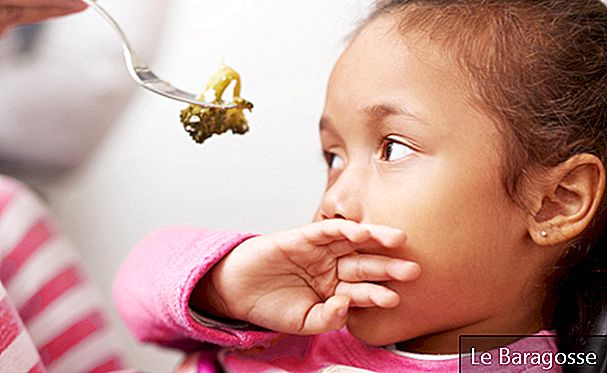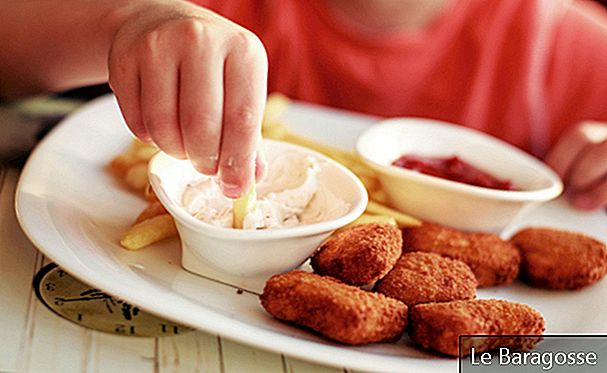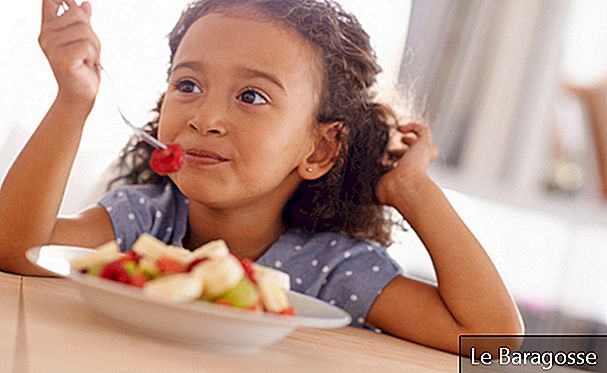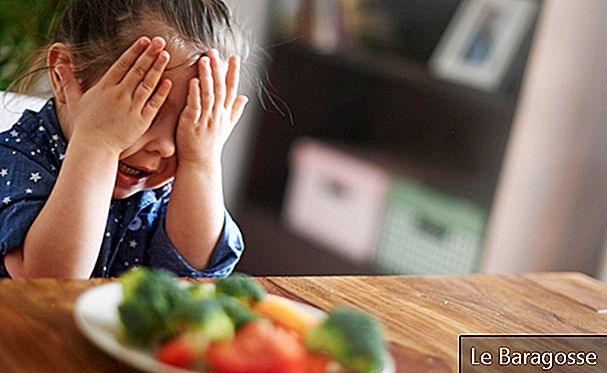
Quantity, location, company, time, when it comes to food, the little ones want to choose everything and create their own rules. Children are slowly exposed to food and may be unreceptive, so they develop feeding difficulties such as selectivity.
We all have food preferences, there are those foods we never liked, the ones we didn't like and came to like, and the ones we have no interest in tasting. But the boundary between what is common and what is peculiar (and can trigger a number of eating problems) is clear, especially in childhood. So we talked to nutritionist Ariane Bomgosto, a specialist in child behavioral nutrition, to help you identify and circumvent the challenge of food selectivity.
Food selectivity: how to identify?

You have to watch your behavior very carefully to find abnormalities. Ariane points out that there are two profiles of children that fit the table of food selectivity:
The nutritionist points out that "when identifying the profile presented, parents should analyze the nutritional guidelines that apply to each case, exercising their ability to understand the peculiarity presented by their child."
Autism and child food selectivity

Children within the autistic spectrum often manifest varying degrees of selectivity toward their diet. This is because autists are often hypersensitive to both external and internal stimuli, influenced by the type of food they are ingesting, so one must be even more aware of the quality and style of diet adopted. It is very important to provide environments that help such children to eat more peacefully and to feel safe to handle their food, as well as to maintain regular times.
Read also: 10 Activities to Encourage Your Child's Literacy at Home
In addition, as regards diet, some indications listed by the expert are:
- Remove empty foods from your child's diet: candies, lollipops, jelly beans, snack foods. They are a cluster of dyes, preservatives and chemical additives without any nutrients;
- Cut the soda: It is an anti-food. In addition to not nourishing, it also steals nutrients because it binds to minerals such as calcium, magnesium and zinc, making them ineffective;
- Attention to gluten: Gluten in these cases should be kept to a minimum or removed when we want to test a child's sensitivity to this protein. This is because it can pass into the bloodstream, activating the body's reactive system. In addition, it can cross the blood-brain barrier, causing inflammation in the brain.
5 Tips for Treating Child Food Selectivity

Once dysfunction is identified, the best thing to do is to seek help from a specialist. We have already pointed out that there is no magic formula for ridding children (and parents) of this misfortune, but it is possible to take some important measures that, if carefully thought through, will gradually improve children's food selectivity (and make children provide more food), they are:
- Do not include rejected food in the child's diet if the child has a possible food aversion to it.
- Do not compare the selective behavior in relation to food manifested by the child with another child who behaves differently, especially on public occasions and in a vexatious manner.
- Encourage your child to create a diary of eating emotions so that she can write down what each food brings to her when she eats it. This diary can be colorful and work the visual appeal. For example, on one side may be the image of food, and on the other, what does the child feel when he imagines eating them in the form of 'smiley faces'? showing feelings like "disgust", "sadness", "anger" or "anguish".
- Instead of asking directly whether or not the child liked the food, ask the child to describe it using food attributes such as temperature, taste and texture. In this way she will be developing her perception of the senses used at the time of eating.This will help you better understand the nature of your taste buds.
- Above all, you must have patience and not impose anything on the child, forcing him to eat a food will not change his relationship with him (at least not for the better). You need to be careful and creative when introducing new foods.
Child food selectivity, eating disorders and other problems

Child food selectivity does not cause eating disorders and problems, but a selectivity can lead to more serious situations by triggering the bad relationship that the individual develops with their own diet.
The possible consequences are:
- Development of nutritional deficits related to nutrient deficiency present in rejected foods.
- Social isolation caused by difficulty in attending places that do not offer accepted food choices.
- Impaired chewing muscle development due to possible atrophy of the poorly used oral motor system.
- Child's distance from the food universe and possible development of aversion to other foods increasing, increasingly, the selectivity picture.
- Transferring the difficulty in dealing with your diet and what you feel at this time to parents. That is, children who start to blame or move away from their parents because they do not realize that they can and want to help them cope with their selectivity.
- It worsens the relationship with food in the long run, undermining a child's ability to learn to make proper food choices for his body.
- Development of depression and frustration caused by the child's difficulty in dealing with his own eating behavior, which may lead to behavioral disorders related to food such as food phobia.
Well, let it all go so far and family meals are always moments of pleasure for everyone involved! Nothing like a table full of options for you and your family to enjoy, is not it? With all precautions taken, food selectivity is unlikely to develop in your child. Also check out how to make your children eat vegetables without grimacing.
Read also: BLW: Learn about the food introduction method that encourages independence
Practical and Effective Strategies for Treating Food Selectivity in Children with Autism (April 2024)
- food
- 1,230
















